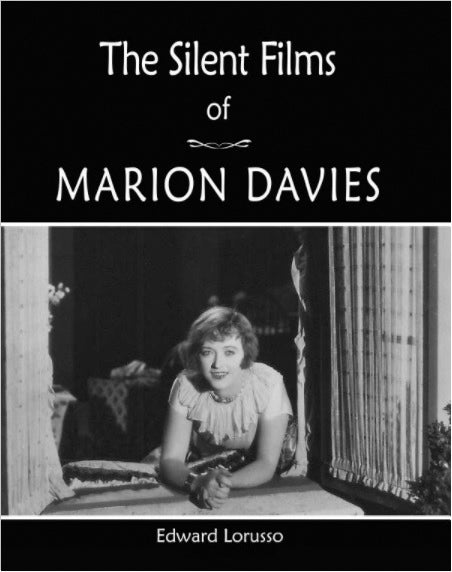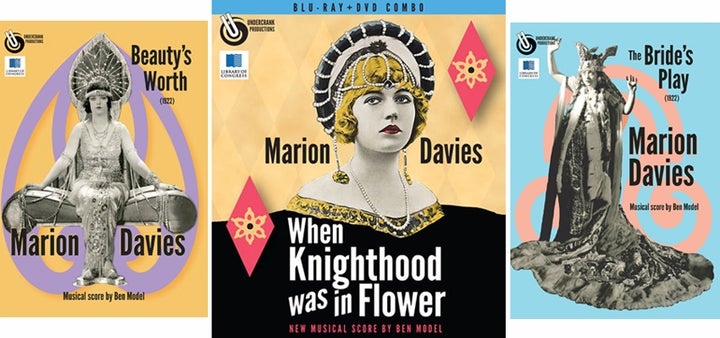In the 1920s, Marion Davies was a superstar—applauded for her talent and celebrated for her celebrity. Davies, a genuinely gifted actress, appeared in nearly four dozen movies throughout her career, including 30 during the silent era. She also produced a handful of her own films, and authored the scenario to another. Notably, she starred in and produced two of what are now regarded as the finest comedies of her time.
At the height of the Jazz Age, Davies must have seemed everywhere. Her name and likeness were continuously splashed across newspapers and magazines around the country, largely in part because she was the live-in companion to one of the most powerful media moguls in America.
And therein lay the problem. Today, too few remember Davies the actress; if she is remembered, it is usually for the wrong reasons. Chief among them was her longtime role as the mistress to a much older married man, William Randolph Hearst, the immensely rich businessman, politician, and newspaper publisher, and one of the more controversial figures of his time. (There was other gossip and scandal as well: was Davies having an affair with Charlie Chaplin? And what did she know about the mysterious death of Thomas Ince, a leading Hollywood producer. The circumstances surrounding Ince’s death are depicted in The Cat’s Meow, the 2001 Peter Bogdanovich film in which Davies is played by Kirsten Dunst.)

Marion Davies
Davies’ long-time association with Hearst has contributed to the perception—then and in the decades that followed—that she was an actress of little talent only made popular by the Hearst media machine. In 1937, after 20 years in front of the camera, Davies retired. She was still popular, but her career and fame were beginning to fade. Four years later, the Orson Welles’ blockbuster Citizen Kane hit screens. Though only loosely based on Hearst, one of the film’s minor characters was widely thought to be based on Davies. That character, played effectively by Dorothy Comingore, is depicted as a shrieking, no-talent, has-been performer. What was the world to think?
Davies suffered the fate of many other early stars. With her films largely out of circulation—her reputation languished. And too, it was conflated with her apparent depiction in Citizen Kane.
Davies’ 1975 memoir, The Times We Had: Life with William Randolph Hearst, contained an apologetic foreword by Welles. “Marion Davies was one of the most delightfully accomplished comediennes in the whole history of the screen,” Welles proclaimed, adding she “would have been a star if Hearst had never happened.”
Davies’ reputation is now beginning to recover. Today, one of her leading champions is writer and film historian Edward Lorusso. He has just authored The Silent Films of Marion Davies, a 182-page illustrated work which surveys the 30 films the actress appeared in between 1917 and 1929. The plots of each movie—the costumes epics, romantic dramas, and madcap comedies—are summarized. There is background information, cast lists, trivia, and survival status along with a scrapbook-like assortment of both color and black and white images. The Silent Films of Marion Davies makes a good case for the actress.

The Silent Films of Marion Davies
“Silent films were right up my alley,” Davies once said. And it’s true. Compared to her talkies, Davies’ silent movies are on the whole more entertaining and enjoyable to watch. Among her last silents are two of the decade’s great comedies, The Patsy (1928), and Show People (1928). Though both were directed by the legendary King Vidor, both starred and were produced by Davies. If you only see a few of the actress’ films, start with these.
Along with writing about Davies, Lorusso has, over the last few years, heroically launched a handful of successful crowd-funding projects to produce new DVDs of the actress’ silent-era work, much of which is preserved by the Library of Congress, and most of which has not been seen in nearly a century. They include limited edition DVDs of The Restless Sex (1920), April Folly (1920), and Enchantment (1921). Two others, Beauty’s Worth (1922) and The Bride’s Play (1922), were recently released through Ben Model’s venerable Undercrank Productions. (Undercrank has also released another Davies costume drama, When Knighthood Was in Flower (1922), which at the time was considered the most expensive film then made. A huge success, it was the film that elevated Davies from stardom to super stardom.) Each contain a musical score by the likes of Donald Sosin, David Drazin, or Ben Model.
Enchantment is a stylish work whose sets alternate between moderne (almost art deco) and a fairy tale look. Davies is charming, and the film is fun to soak up visually. An earlier film, The Restless Sex, is also a stylish work filled with Jazz Age frivolity. In October, Lorusso successfully completed another Kickstarter project for Buried Treasure (1921). To date, two of the Davies films Lorusso has produced have aired on Turner Classic Movies (TCM).

Three Marion Davies films from Undercrank Productions
Anyone wanting to learn more will want to check out Hugh Munro Neeley’s superb 2002 documentary, Captured on Film - The True Story of Marion Davies, narrated by actress Charlize Theron. There is an also an earlier biography by Fred Lawrence Guiles, published in 1972.
What everyone in the early film community is waiting for is a well-researched, up-to-date biography of the actress. It’s coming from film historian Lara Gabrielle Fowler, who wrote the booklet essay for When Knighthood Was in Flower. Fowler’s book is titled Captain of Her Soul: The Life of Marion Davies. Though a publisher hasn’t been set, Fowler expects to have this highly anticipated work ready for publication in 2019. Until then, keep an eye out for yet more Davies films on DVD, thanks to the efforts of Lorusso.
Thomas Gladysz is arts and entertainment writer whose work has appeared in the San Francisco Chronicle, Classic Images and elsewhere. He has authored three books on the films of Davies’ contemporary, Louise Brooks, and contributed an audio commentary to the DVDs of two of Brooks’ films.
